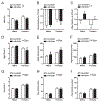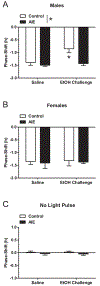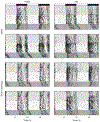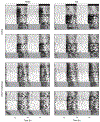Sex Differences in Photic Entrainment and Sensitivity to Ethanol-Induced Chronodisruption in Adult Mice After Adolescent Intermittent Ethanol Exposure
- PMID: 30102762
- PMCID: PMC6214762
- DOI: 10.1111/acer.13867
Sex Differences in Photic Entrainment and Sensitivity to Ethanol-Induced Chronodisruption in Adult Mice After Adolescent Intermittent Ethanol Exposure
Abstract
Background: Evidence supports a role for the circadian system in alcohol use disorders, but the impact of adolescent alcohol exposure on circadian timing later in life is unknown. Acute ethanol (EtOH) attenuates circadian photic phase-resetting in adult, but not adolescent, rodents. However, nearly all studies have focused on males and it is unknown whether this adolescent-typical insensitivity to EtOH persists into adulthood after adolescent drinking.
Methods: Circadian activity was monitored in C57BL/6J mice receiving adolescent intermittent EtOH (AIE) exposure (15% EtOH and water every other day throughout adolescence) or water alone followed by 24 days wherein EtOH was not available (washout). Mice then received a challenge dose of EtOH (1.5 g/kg, intraperitoneal) or saline 15 minutes prior to a 30-minute phase-delaying light pulse and then were released into constant darkness (DD). To control for possible phase-shifting by EtOH challenge alone, a separate group of mice underwent AIE exposure (or water-only) and washout and then received an EtOH or saline injection, but did not receive a light pulse prior to DD.
Results: Striking sex differences in nearly all measures of circadian photic entrainment were observed during adolescence but AIE effects were subtle and few. Only EtOH-naïve adult male mice showed attenuated photic phase-shifts with EtOH challenge, while all other groups showed normal phase-resetting responses to light. AIE-exposed females showed a persistent delay in activity offset.
Conclusions: Adult male AIE-exposed mice retained adolescent-like insensitivity to EtOH-induced suppression of photic phase-resetting, suggesting AIE-induced "lock-in" of an adolescent behavioral phenotype. Adult AIE-exposed females showed delayed initiation of the rest phase. Our results also indicate that intermittent EtOH drinking has subtle effects on circadian activity in mice during adolescence that differ from previously reported effects on adult males. The observed sex differences in circadian activity, EtOH consumption and preference, and responses to EtOH challenge merit future mechanistic study.
Keywords: Adolescent; Alcohol; Circadian; Photic Phase-Resetting.
© 2018 by the Research Society on Alcoholism.
Figures








References
-
- Aschoff J (1965) Response curves in circadian periodicity, in Circadian Clocks, Circadian Clocks (ASCHOFF J ed, pp 95–111, North-Holland, Amsterdam.
-
- Blattner MS, Mahoney MM (2013) Photic phase-response curve in 2 strains of mice with impaired responsiveness to estrogens. J Biol Rhythms 28:291–300. - PubMed
Publication types
MeSH terms
Substances
Grants and funding
LinkOut - more resources
Full Text Sources
Other Literature Sources

